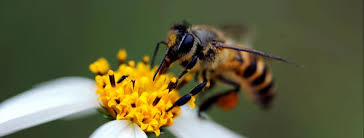By Francis Otucu
KAMPALA/UGANDA: A new study by Ugandan scientists at Makerere University has revealed that stingless bees in Uganda are producing a very rare type of honey that is probably the best in the region.
The study whose results have been published in the Journal of Apicultural Research, used a cross-sectional design to collect samples from two agroecological zones of Western Highlands and Lake Victoria Crescent where this tribe of bees is currently domesticated, between October 2020 and February 2021.

What are stingless Bees?
According toWikipedia, Stingless bees, sometimes called stingless honey bees or simply meliponines, are a large group of bees (about 550 described species), comprising the tribe Meliponini (or subtribe Meliponina according to other authors). They belong in the family Apidae, and are closely related to common honey bees, carpenter bees, orchid bees, and bumblebees.
Meliponines have stingers, but they are highly reduced and cannot be used for defense, though these bees exhibit other defensive behaviors and mechanisms. Meliponines are not the only type of bee incapable of stinging but some stingless bees have powerful mandibles and can inflict painful bites.
The discovery means a lot to the honey industry in Uganda which has a production potential of over 500,000 metric tonnes of honey annually but produces only 5,000 metric tonnes, rated as one of the best in the world, according to the Uganda Investment Authority data. In Uganda, honey is produced in Bushenyi, Bugisu, Nakasongola, Kabarole, and West Nile regions.
The Study:
Titled: “First physicochemical analysis of stingless bee honey from Uganda,” the study was carried out by eight scientists with funding from the Uganda government under the Makerere University Research and Innovation Fund (MaKRIF) which it commits up to Shs. 30 billion every financial year for scientific research aligned to the national development agenda.
The scientists are: Charles Oromokoma, Patrice Kasangaki, Perpetra Akite, Ronald Mugume, Robert Kajobe, Gilbert Mangusho, Moses Matovu, and Moses Chemurot, all from the Department of Zoology, Entomology, and Fisheries Sciences, Makerere University Kampala, Kampala, Uganda
“Wet season samples were collected in October 2020 while the dry season samples were collected in February 2021,” the scientists reveal in their journal article.
The study delves into the remarkable properties of honey harvested from Uganda’s stingless bees, highlighting the distinct texture that distinguishes it from conventional honey varieties.
Researchers emphasize that this rare texture adds an extra layer of allure and appeal for honey enthusiasts and connoisseurs.
The indigenous stingless bees, native to Uganda’s diverse ecosystems, play a pivotal role in the production of this exceptional honey. Their foraging habits and specific interactions with local flora contribute to the development of a distinct taste profile and exquisite consistency, making it a sought-after delicacy for honey lovers.

The newfound recognition of Uganda’s stingless bee honey opens up exciting possibilities for the local honey industry. It presents an opportunity to promote this unique product to discerning consumers both locally and internationally, potentially expanding market demand and creating new avenues for economic growth.
The study not only celebrates the exceptional texture of the honey but also underscores the importance of preserving and protecting Uganda’s stingless bee populations. Their continued existence is crucial for maintaining the delicate balance of ecosystems and ensuring the sustained production of this rare honey variety.
The research findings provide a foundation for further exploration and investment in Uganda’s stingless beekeeping industry. By leveraging these insights, beekeepers can enhance their practices, optimize honey production techniques, and harness the full potential of this distinctive resource.
Geographical distribution
Stingless bees can be found in most tropical or subtropical regions of the world, such as Australia, Africa, Southeast Asia, and tropical America. The majority of native eusocial bees of Central and South America are stingless bees, although only a few of them produce honey on a scale such that they are farmed by humans. They are also quite diverse in Africa, including Madagascar, and are farmed there also; meliponine honey is prized as a medicine in many African communities, as well as in South America.
Behavior
Being tropical, stingless bees are active all year round, although they are less active in cooler weather, with some species presenting diapause. Unlike other eusocial bees, they do not sting but will defend themselves by biting if their nest is disturbed.
In addition, a few (in the genus Oxytrigona) have mandibular secretions, including formic acid, that cause painful blisters. Despite their lack of a sting, stingless bees, being eusocial, may have very large colonies made formidable by the number of defenders.
Honey production
In warm areas of Australia, these bees can be used for minor honey production. They may also be kept successfully in boxes in these areas. Special methods are being developed to harvest moderate amounts of honey from stingless bees in these areas without causing harm.
Like the European honey bee (Apis mellifera), which provides most of Australia’s commercially produced honey, stingless bees have enlarged areas on their back legs for carrying pollen back to the hive. After a foraging expedition, these pollen baskets or corbiculae can be seen stuffed full of bright orange or yellow pollen. Stingless bees also collect nectar, which they store in an extension of their gut called a crop.

Back at the hive, the bees ripen or dehydrate the nectar droplets by spinning them inside their mouth parts until honey is formed. Ripening concentrates the nectar and increases the sugar content, though it is not nearly as concentrated as the honey from true honey bees. Nectar is generally 70%-80% water and stingless bees remove far less of this water from their honey than European honey bees, who take their honey’s water content down to around 18%.
Stingless bee honey is consequently much runnier than commercial honey and more prone to spoiling by microorganisms, such as yeasts.
Stingless bees store their aromatic honey in clusters of small resin pots near the extremities of the nest. For honey production, the bees need to be kept in a box specially designed to make the honey stores accessible without damaging the rest of the nest structure.
Some recent box designs for honey production provide a separate compartment for the honey stores so the honey pots can be removed without spilling honey into other areas of the nest.
Unlike a hive of commercial honeybees, which can produce 75 kg (165 lbs) of honey a year, a hive of Australian stingless bees produces less than 1 kg (2 lbs). Stingless bee honey has a distinctive “bush” taste—a mix of sweet and sour with a hint of fruit. The taste comes from plant resins—which the bees use to build their hives and honey pots—and varies at different times of the year depending on the flowers and trees visited.
In 2020 researchers at the University of Queensland found that some species of stingless bee in Australia, Malaysia, and Brazil produce honey that has trehalulose—a sugar with an unusually low glycaemic index (GI) compared to that of glucose and fructose, the main sugars composing conventional honey.
Such low glycaemic index honey is beneficial for humans because its consumption does not cause blood sugar to spike, forcing the body to make more insulin in response. Honey with trehalulose is also beneficial as it this sugar cannot nourish the lactic acid-producing bacteria that cause tooth decay.
The university’s findings supported the long-standing claims of Indigenous Australian people that native honey is beneficial to human health.
The study can also be accessed by clicking on this link: First physicochemical analysis of stingless bee honey from Uganda

















